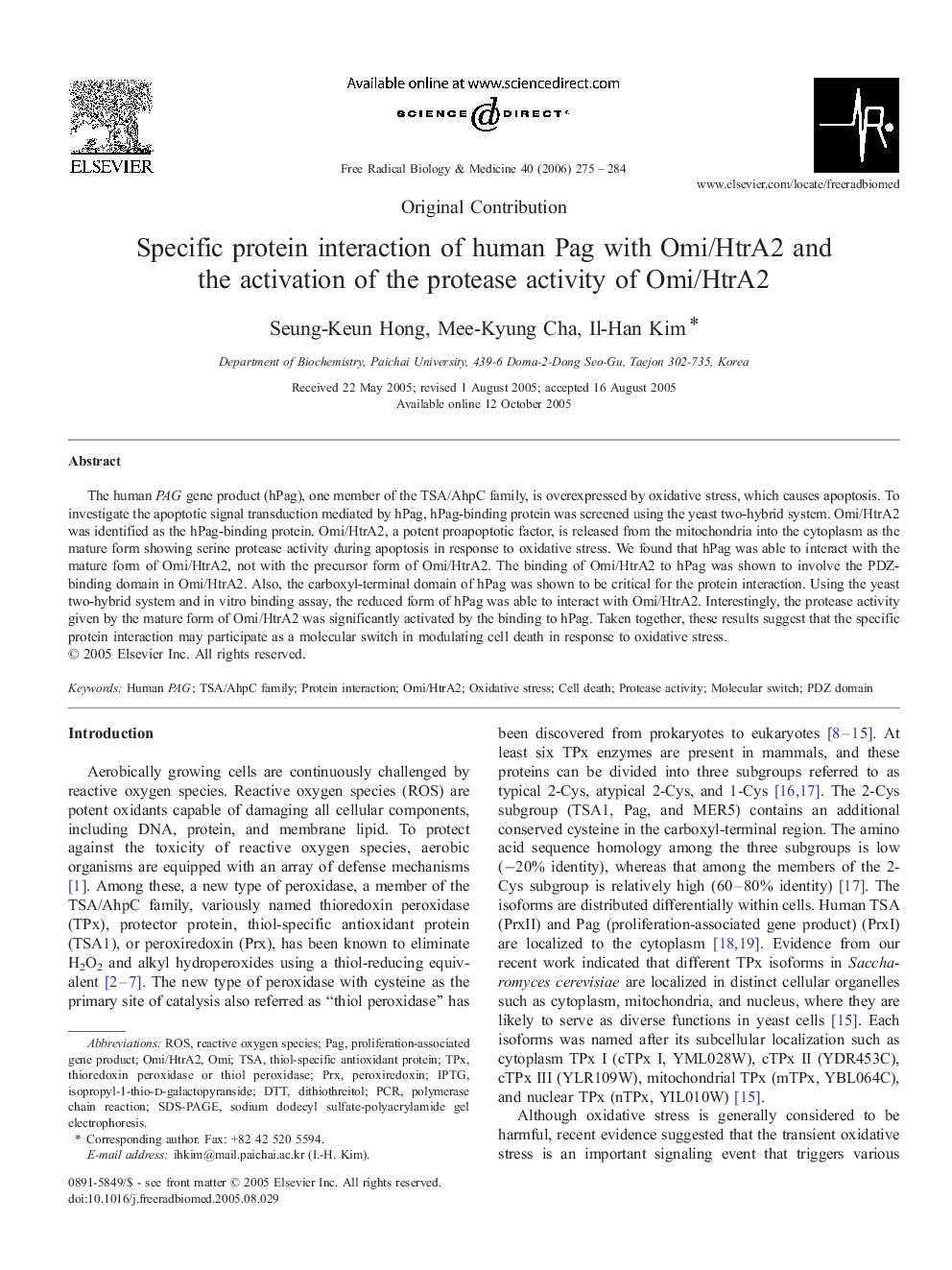| Article ID | Journal | Published Year | Pages | File Type |
|---|---|---|---|---|
| 1912102 | Free Radical Biology and Medicine | 2006 | 10 Pages |
Abstract
The human PAG gene product (hPag), one member of the TSA/AhpC family, is overexpressed by oxidative stress, which causes apoptosis. To investigate the apoptotic signal transduction mediated by hPag, hPag-binding protein was screened using the yeast two-hybrid system. Omi/HtrA2 was identified as the hPag-binding protein. Omi/HtrA2, a potent proapoptotic factor, is released from the mitochondria into the cytoplasm as the mature form showing serine protease activity during apoptosis in response to oxidative stress. We found that hPag was able to interact with the mature form of Omi/HtrA2, not with the precursor form of Omi/HtrA2. The binding of Omi/HtrA2 to hPag was shown to involve the PDZ-binding domain in Omi/HtrA2. Also, the carboxyl-terminal domain of hPag was shown to be critical for the protein interaction. Using the yeast two-hybrid system and in vitro binding assay, the reduced form of hPag was able to interact with Omi/HtrA2. Interestingly, the protease activity given by the mature form of Omi/HtrA2 was significantly activated by the binding to hPag. Taken together, these results suggest that the specific protein interaction may participate as a molecular switch in modulating cell death in response to oxidative stress.
Keywords
Related Topics
Life Sciences
Biochemistry, Genetics and Molecular Biology
Ageing
Authors
Seung-Keun Hong, Mee-Kyung Cha, Il-Han Kim,
